How To Rank With Rich Snippets SEO

How To Rank With Rich Snippets
Rich snippets, or as many SEO call them, Google Snippets, have been around since 2009. And after nine years of continuous tweaking, tests and breakthroughs, we can finally say it has become an element every online marketer needs to optimize for. But what are they exactly?
Featured snippets in search are brief answers to a user’s particular query. Basically, Google extracts information from one of the top-ranking pages that, they believe, best answers the question and displays it on top of Google search results.
The idea is to have a user’s question answered before actually clicking the website link and reading more about it. The idea of having a user read the answer to his or her question before actually entering your website seems bad for your metrics and ranking, but research shows this is not the case as long as you structure your data in a way that makes your prospects to go to your website (more on that later).
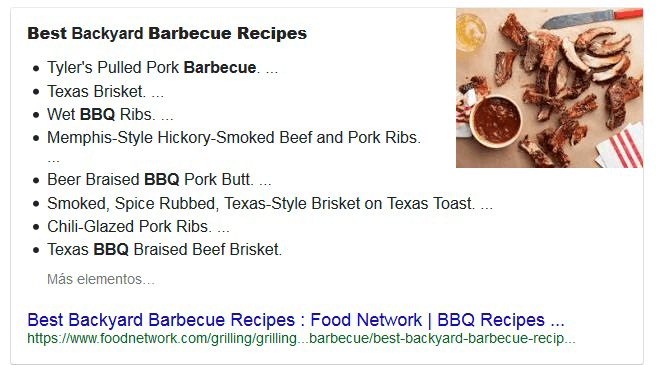
Rich Snippet, or Google Snippet Example
So, why are these rich snippets so important in SEO today?
Because they translate into more traffic for you! They occupy the very top of the search engine results (even above websites ranking #1 for a specific keyword), and it’s usually all about optimizing content you’re already ranking for, making it a fairly low cost- high benefit activity.
On this guide I’m going to quote hard data on why you should be optimizing for rich snippets, and how you can opt in for some of these amazing traffic funnels today!
Why You Should Rank For Rich Snippets
Alright, so you’re probably wondering how exactly rich snippets guarantee you more traffic and are so important in SEO today. Let’s look at the numbers:
Search Engine Land published a case study where the website’s click-through rate went from 2% to 8%, which in turn translated to a massive organic traffic increase of 677%!
AHREF also published two massive posts explaining the important of featured snippets in today’s SEO game. They were able to determine that at least 12.29% of all queries have their very own featured snippets. This number has likely increased since then.
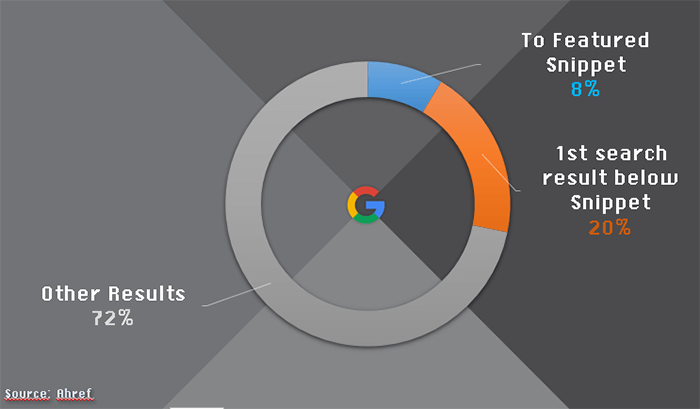
SERP Front Page Click Distribution
They also found out that the click distribution on Google’s search engine first page results for these queries, and they found out that rich snippets effectively take around 8.6% of the total clicks, while the first result on the listings takes 19.6% of the clicks in the search engine results frontpage.
This means, that before rich snippets were introduced, around 26% of all the clicks on searches went straight to the first URL on the SERP. Now, rich snippets can take almost 9% of the total clicks for themselves.
So, what does this means?
- If you’re not ranking #1 for a specific keyword that also has a rich snippet, you can potentially snatch it and get a massive traffic boost to your website.
- If you’re already #1 for a keyword or query, you need to secure the rich snippet if you want to keep your usual traffic. Not doing so can lead to a 31% decrease in your traffic for said keyword!
- Online marketers that are creative on the way they present and format their content for google snippets can opt-in for massive traffic gains.
So, as the data suggest, getting a rich snippet for your website can lead to an increase in traffic and rankings, and not doing so will no doubt cost you potential customers and users.
Another reason to rank for featured snippets, is because they’re mostly triggered by longtail keywords. This means, that the more thorough, and well formatted your content is, the more rich snippets you’ll have a chance to rank for.
Types of Rich Snippets
Featured snippets usually answer why/how/where/what/who types of questions with a summary, a small list, table or even a YouTube video. It comes with a page title and link to the website where this information is hosted.
If you’re wondering what the top five rich snippet trigger words are, I’ve put up a quick list for you based on Ahref’s data:
- Recipe
- Best
- Vs
- Make
- Definition
Having said that, these amount to roughly 8.6% of total rich snippet triggers. There’s a crazy number of different triggers that vary from industry and content type that you can leverage for your SEO efforts, so don’t feel obligated to adapt your content around these words.
For now, let’s categorize featured snippets so you can decide which ones your prospects would be most interested in:
Rich Snippets: Paragraph Snippets
These snippets briefly answer a question with a paragraph and invite the reader to know more by clicking your link.
If your website has a Frequently Asked Questions (FAQ) section, you might have a few paragraph snippet opportunities you can take advantage of.

This Is a Paragraph Rich Snippet
Rich Snippets: List Snippets
As the name suggests, these google snippets usually feature a step-by-step approach on how to do just about anything. Only a few of the steps are generally listed, but that’s actually a good thing, and here’s why:
This sort of snippets has an elevated click-through rate, because the more complicated a task is, the more steps it’ll have, and your viewer will likely have to click your link to access the rest of the steps (since not all of them can be listed in the rich snippet, due to their limited size)
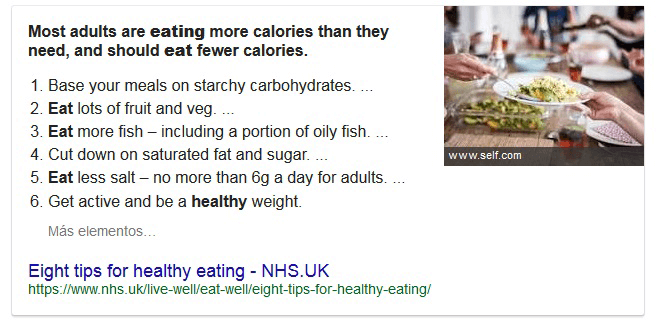
This Is A List Rich Snippet
So, consider having recipes, tasks and simple tutorials on a list format on your website. You’ll have a much better chance of ranking for these nifty rich snippets.
Bullet List Rich Snippet
Like our last rich snippet, this one also sports a list, but it’s not numbered. It’s common in unranked items lists or product feature lists.

This Is A Bullet List Rich Snippet
Data Table Rich Snippets
Turns out, having hard data neatly organized in a table is a very popular way to get your information featured in a rich snippet.
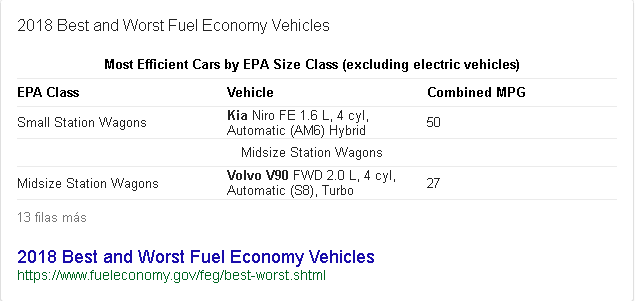
This Is A Table Rich Snippet
There are lots of way to optimize and format your data, but it’s generally recommended to keep things clear and simple.
Rich snippets are meant to answer specific, concrete questions. Any other extra information you’ll want to keep on your website (doing so will also help you with your click-through rates and traffic)
Video Rich Snippet
Also known as the YouTube featured snippet. This rich snippet uses a YouTube video to answer a specific query.
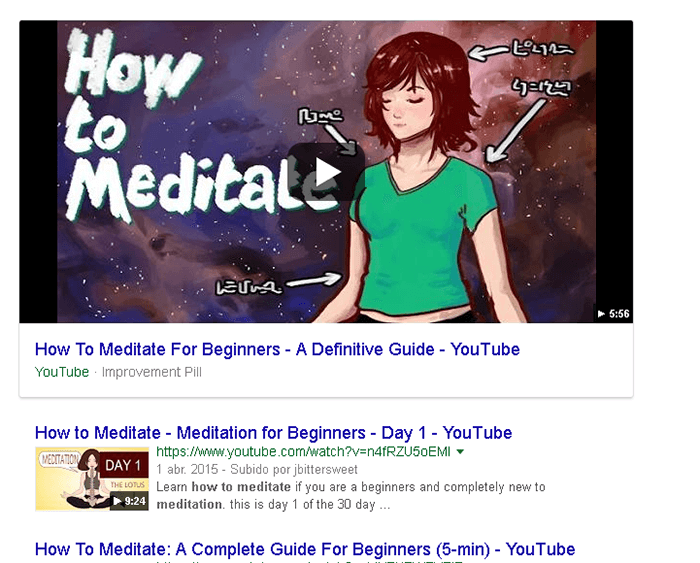
This is YouTube Featured Snippet
Optimizing your video’s description to match queries is highly recommended, so be sure to check out our YouTube SEO guide to really get the most out of your multimedia assets SEO-wise.
This covers the most important google snippets (when it comes to traffic and rankings). Now we’re going to find out how exactly we can rank for these snippets, along with some optimization tips and opportunities!
How To Rank For Rich Snippets
Ranking for rich snippets takes a fair bit of creativity, optimization and meeting certain baseline requirements. First let’s take a look at some of them before you start ranking for rich snippets relevant to your website’s content.

You Need To Be In The SERP’s Top 10 Results For A Query First
AHREF released a study that determined that you can opt-in for rich snippets if you’re already ranking in the top 10 results for said query. If you need a hand getting to the front page first, I recommend you take a look at our SEO ranking checklist. A healthy mix of guest posts, PBN backlinks and optimization can get you there faster than you think.
Keep in mind, you only need to be in the front page of the search engine results for the query, this means anywhere between 1-10. Snatching a query’s rich snippet is a great way to jump from position 5-6 straight to #2 or #1, so definitely be on the lookout!
Google Snippets Rotation
Featured snippets URL’s rotates between 1-4 times during a window of four months around 47% of the time. When you finally get your query’s rich snippet, it’s a good idea to regularly check on it.
The snippet’s rotation distribution, according to AHREF study looks like this:
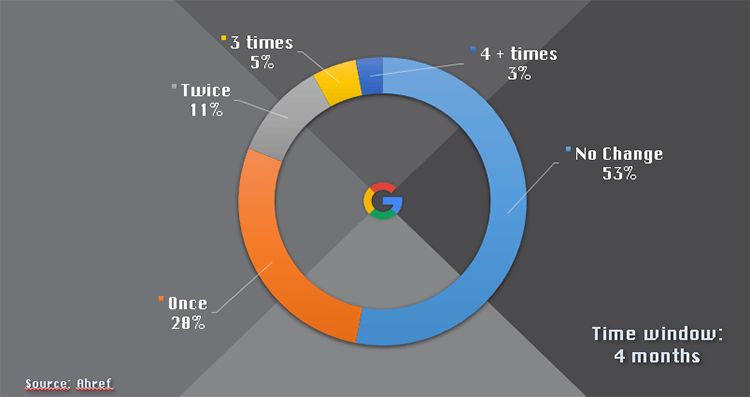
Now that you know the basics requirements, it’s time to start searching for snippet opportunities.
Finding Rich Snippets
There’s only a couple of tools that have dedicated modules for featured snippets, and we covered both of them on our Best SEO Tools overview: SEMRush and AHREF.
If you’re using SEMRush, search your website’s domain in the URL bar, and then click on “Positions” under your “Organic Research” tab. Then click on “Featured Snippets” under the SERP Features section to your right.
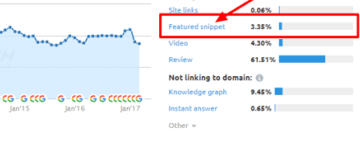
You’ll be given a list of keywords that currently have a google snippet. Depending on the traffic, difficulty and relevance to your website’s content, you’ll want to pick a few of these and optimize around it.
If you on the other hand use Ahref, simply type your domain name in the URL bar, go to the “Organic Keyword” tab, then filter the positions by “Top 10”, and under SERP features tick the boxes for “All Features” and “Featured Snippets”
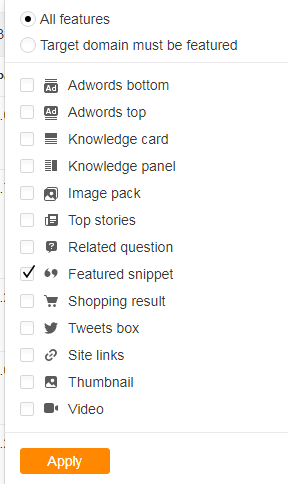
You’ll also get a list of keywords you’ll want to optimize for, similarly to SEMRush modules.
Rich Snippets Optimization
Once you’ve found your keywords, it’s time to start optimizing your content for them!
Perform a regular search and look at the answer the snippet offers to the query.
Now, go to the part of your content that answers the question, and modify it so that it draws Google’s attention and “out-answers” your competition. Here are some things you can do:
Format your content.
If you can answer the query/question you’re trying to rank for with a table, a list, or a short paragraph, do so. Google’s algorithm loves structured data and it’ll give you an edge over others
Use headers (h1/h2/h3)
Creating a heading tag that answers the query’s question directly will help you create context for the short, concise answer that’ll get your answers (or instructions) featured in Google’s SERP.
Keyword density parameters in this specific part of the content is not a top priority. What’s important is that you answer the question concisely.
Use images or charts
If at all possible, use comparison charts, or images that grab’s the searcher’s attention. This vastly improves clickthrough rates and it’s something you should already be doing.
Make sure your media content is optimized around your target keywords as well.
Rich Snippets in SEO closing notes
Awesome! If you followed our guide from start to finish, you should know exactly how to leverage rich snippets for your SEO campaigns.
It takes considerable research, creativity and optimal content restructuring, but the rewards are well worth the hassle. Just remember that you’ll have to rank on the front page of your target keywords before you can actually funnel traffic via rich snippets.
If you’re still stuck on the second, or third page, I’d recommend you buy PBN backlinks from professionals. Our high quality, diversified PBN network has delivered over 140,000 orders so far and we’ve helped thousands of online marketers reach their passive income dreams.

Thanks for reading!


